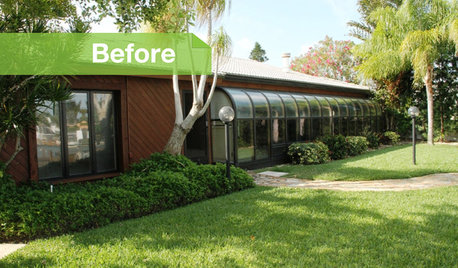Advice please for starting home lawn program
dgeesaman
15 years ago
Related Stories

DECORATING GUIDESHow to Decorate When You're Starting Out or Starting Over
No need to feel overwhelmed. Our step-by-step decorating guide can help you put together a home look you'll love
Full Story
HEALTHY HOMEHow to Childproof Your Home: Expert Advice
Safety strategies, Part 1: Get the lowdown from the pros on which areas of the home need locks, lids, gates and more
Full Story
MOST POPULAR10 Things to Ask Your Contractor Before You Start Your Project
Ask these questions before signing with a contractor for better communication and fewer surprises along the way
Full Story
DECORATING GUIDES10 Design Tips Learned From the Worst Advice Ever
If these Houzzers’ tales don’t bolster the courage of your design convictions, nothing will
Full Story
REMODELING GUIDESFollow a Ranch House Renovation From Start to Finish
Renovation Diary, Part 1: Join us on a home project in Florida for lessons for your own remodel — starting with finding the right house
Full Story
FARM YOUR YARDAdvice on Canyon Farming From L.A.'s Vegetable Whisperer
See how a screened garden house and raised beds help an edible garden in a Los Angeles canyon thrive
Full Story
TASTEMAKERSBook to Know: Design Advice in Greg Natale’s ‘The Tailored Interior’
The interior designer shares the 9 steps he uses to create cohesive, pleasing rooms
Full Story
GARDENING GUIDES10 Tips to Start a Garden — Can-Do Ideas for Beginners
Green up your landscape even if you're short on time, money and knowledge, with these manageable steps for first-time gardeners
Full Story
BATHROOM DESIGNDreaming of a Spa Tub at Home? Read This Pro Advice First
Before you float away on visions of jets and bubbles and the steamiest water around, consider these very real spa tub issues
Full Story
THE ART OF ARCHITECTURESound Advice for Designing a Home Music Studio
How to unleash your inner guitar hero without antagonizing the neighbors
Full StorySponsored






dgeesamanOriginal Author
shuber
Related Professionals
Kyle Landscape Architects & Landscape Designers · Flagstaff Landscape Contractors · Hilo Landscape Contractors · New Carrollton Landscape Contractors · Cincinnati Driveway Installation & Maintenance · Springfield Driveway Installation & Maintenance · Ridgewood Fence Contractors · Agoura Hills Fence Contractors · Castle Rock Fence Contractors · Cherry Hill Fence Contractors · Falls Church Fence Contractors · Greentree Fence Contractors · Malibu Fence Contractors · Owings Mills Fence Contractors · West Bend Fence Contractorsgreeness
bpgreen
soccer_dad
spazboy357
soccer_dad
spazboy357
Kimmsr
rcnaylor